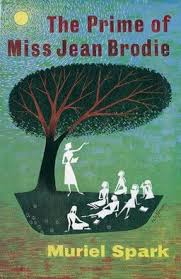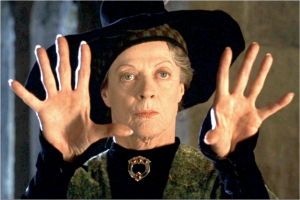When I was a kid, Jamaica was a place where they played cricket with a cavalier attitude.
A few years later and it was the source of “the reggae music”. Of course it was happening when I was a kid, but who could find it in Bendigo in the early ‘70s, or even on radio.
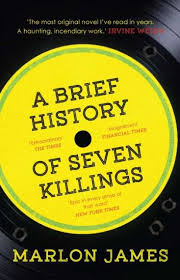 Bob Marley and the Wailers were my introduction to reggae, later I would find there were many others, but Marley has been described as the first Third World superstar, and few would argue.
Bob Marley and the Wailers were my introduction to reggae, later I would find there were many others, but Marley has been described as the first Third World superstar, and few would argue.
As a cadet journalist at the Bendigo Advertiser in 1976 I remember being aware of his being shot in December.
The shooting, its lead up and aftermath provide the starting point for Marlon James’s novel.
Fair warning, the only place Bob Marley is mentioned by name is on the back cover of my edition. For James’s novel he is the Singer.
This is a grim and gritty tale of a Third World country where power resides in the shadows and its protagonists are blunt instruments to achieve their ends.
The multi-strand narrative, its scope and voices put it in league with such novels as Don Delillo’s Underworld, American Tabloid, by James Ellroy, and Richard Price’s Clockers, but by the end the prevailing mood cleaves more tightly with Nelson Algren’s bleak Never Come Morning. For every Singer who climbs out of the ghetto, there are so many more who ensure that not only do they not escape, they provide the means of enslavement of others.
James uses many voices to reveal his story, each individual offering windows to actions and motives that might or might not be relevant to the central story.
A word here for the reader, his use of patois can at times be impenetrable, but stick with it. Word is Brief History of Seven Killings is being made into a TV series, so subtitles might help.
For the first four parts, the tale is told in turn by the protagonists. There is dialogue, but only told from the point of view of the narrator of the part.
And those narrators include gang bosses, underbosses, kids who do their bidding, a groupie, an American music journalist, CIA and ex-CIA operatives, a revolutionary, politicians – almost anyone, except the Singer, who is present as the shooting victim, to be observed and to observe justice being meted out later.
One of the towering achievements is to give each a distinctive voice, vocabulary and personality through their voices. James helpfully provides a list at the start that proves helpful in keeping track of the players.
The Jamaica depicted here is a short distance from cricket’s Sabina Park but a long way for those living in these ghettos, fictional suburbs about where Trench Town is situated.
The gang territories are marked out and woe betide the member who transgresses. Copenhagen City is the domain of Papa-Lo and his lieutenant Josey Wales, Shotta Sherrif rules the Eight Lanes and there are various sub-gangs in this corrugated iron landscape. Of course, it can be worse, that would be the Garbagelands.
Politics is central to the story and largely irrelevant to the foot soldiers. The gangs are allied with the JLP or PNP, but when gang members are sent out to do the bosses’ and their bosses’ bidding, it is for short-term reward, drugs usually, not ideology.
The CIA has raised its presence, fearful Jamaica will become another domino just over the horizon from the United States, while the revolutionary is happy to provide hardware to help the communist cause, or any cause that will pay his price.
It then later moves to the criminal enterprises of the Jamaicans in New York, ideology well and truly in the rear view mirror.
The narratives continue, though the contributors dwindle in number, mostly because they die, and never happily or of old age.
In the author’s note at the end there is a warning to his mother about a section, now whether it is because the violence steps up or the gay sex is moot. Both serve to advance the story and are in context, so hopefully Marlon’s mum understood.
If this all seems a little vague the main concern is that a wrong word here or there could so easily spoil what is a great read.


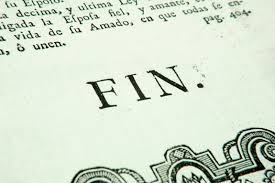 There was only one out and out failure this year: Michel Holeybottom’s
There was only one out and out failure this year: Michel Holeybottom’s 
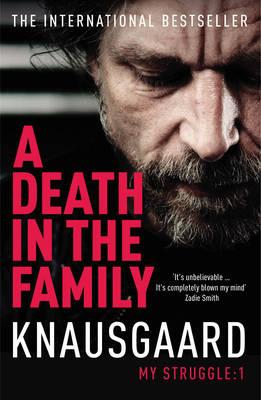 True story, folks. You should have been reading this post in November 2015 rather than February 2016, but sometimes that’s the way the cookie crumbles.
True story, folks. You should have been reading this post in November 2015 rather than February 2016, but sometimes that’s the way the cookie crumbles.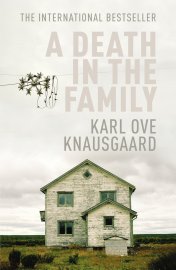 Reading part one I assumed this would be what I would write about most. Knausgaard is less than two months older than me, and his snippets of childhood lived in Scandinavia in the mid- to late-70s – as I was living snippets of childhood in Northern Ireland – certainly resonated. Does he mention Eurovision? I think he maybe does. Maybe we both watched Brotherhood of Man win for Kisses For Me! Couldn’t have done that in Australia, not in the ‘70s. Later in part one Knausgaard talks about early to mid adolescence, and his early tussles with girls, and sex, and alcohol. This is interesting enough, and, like most of the book (his translator does let him down a few times too many) well written, but, thanks to my sexuality and my particular upbringing, not something I could relate to terribly closely. Still – interesting enough. The depiction of his parents is also interesting, and the dissolution of their marriage, and his father’s relationship with another woman, and his father’s incipient alcoholism, and Karl Ove’s own burgeoning love of booze, rounds out part one very nicely. This is really good, I thought.
Reading part one I assumed this would be what I would write about most. Knausgaard is less than two months older than me, and his snippets of childhood lived in Scandinavia in the mid- to late-70s – as I was living snippets of childhood in Northern Ireland – certainly resonated. Does he mention Eurovision? I think he maybe does. Maybe we both watched Brotherhood of Man win for Kisses For Me! Couldn’t have done that in Australia, not in the ‘70s. Later in part one Knausgaard talks about early to mid adolescence, and his early tussles with girls, and sex, and alcohol. This is interesting enough, and, like most of the book (his translator does let him down a few times too many) well written, but, thanks to my sexuality and my particular upbringing, not something I could relate to terribly closely. Still – interesting enough. The depiction of his parents is also interesting, and the dissolution of their marriage, and his father’s relationship with another woman, and his father’s incipient alcoholism, and Karl Ove’s own burgeoning love of booze, rounds out part one very nicely. This is really good, I thought.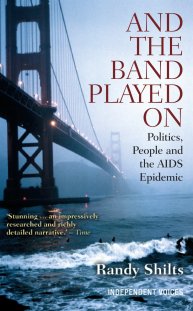 Back in 1981, a young, openly gay journalist named Randy Shilts got a position at the San Francisco Chronicle. His round was “gay issues”, in a city that was more heavily involved in gay liberation and its civil rights than any other in the United States. A city in which two in five adult males were openly gay, and to which about 5000 gay men were relocating every year. Not to mention gay tourism, which attracted thousands of men from all over the world to its precincts, including its infamous bath houses.
Back in 1981, a young, openly gay journalist named Randy Shilts got a position at the San Francisco Chronicle. His round was “gay issues”, in a city that was more heavily involved in gay liberation and its civil rights than any other in the United States. A city in which two in five adult males were openly gay, and to which about 5000 gay men were relocating every year. Not to mention gay tourism, which attracted thousands of men from all over the world to its precincts, including its infamous bath houses.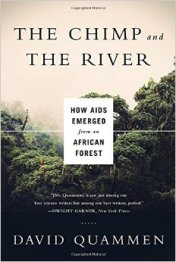 Postscript: We also read American science writer David Quammen’s The Chimp And The River, which came out earlier this year. This small book confirms the speculation from two decades ago – that AIDS was transferred from chimpanzees to humans in Africa at the beginning of the previous century in a “spillover”. Similarly it’s an essential read on this devastating pandemic, which, while no longer an automatic death sentence (not in the wealthy west, at any rate) still kills more than a million people every year and infects many more.
Postscript: We also read American science writer David Quammen’s The Chimp And The River, which came out earlier this year. This small book confirms the speculation from two decades ago – that AIDS was transferred from chimpanzees to humans in Africa at the beginning of the previous century in a “spillover”. Similarly it’s an essential read on this devastating pandemic, which, while no longer an automatic death sentence (not in the wealthy west, at any rate) still kills more than a million people every year and infects many more. 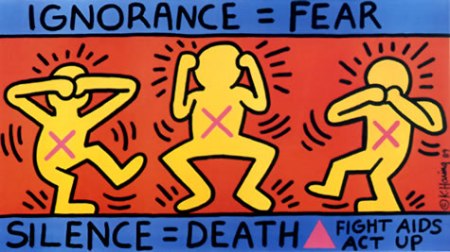 And The Band Played On (a reference to the musicians playing on the deck of the Titanic as the ship sank – in that story a symbol of humanity, here something far more sinister) takes us back almost 20 years before I came out, to Kinshasa, capital of what was then Zaire. Via Scandinavia, Paris, but mostly the United States, San Fran journo Randy Shiltz unravels the medical, political and cultural nightmare that unfurled over the ‘80s and was ultimately to claim his own life a few years after he finished this book.
And The Band Played On (a reference to the musicians playing on the deck of the Titanic as the ship sank – in that story a symbol of humanity, here something far more sinister) takes us back almost 20 years before I came out, to Kinshasa, capital of what was then Zaire. Via Scandinavia, Paris, but mostly the United States, San Fran journo Randy Shiltz unravels the medical, political and cultural nightmare that unfurled over the ‘80s and was ultimately to claim his own life a few years after he finished this book.